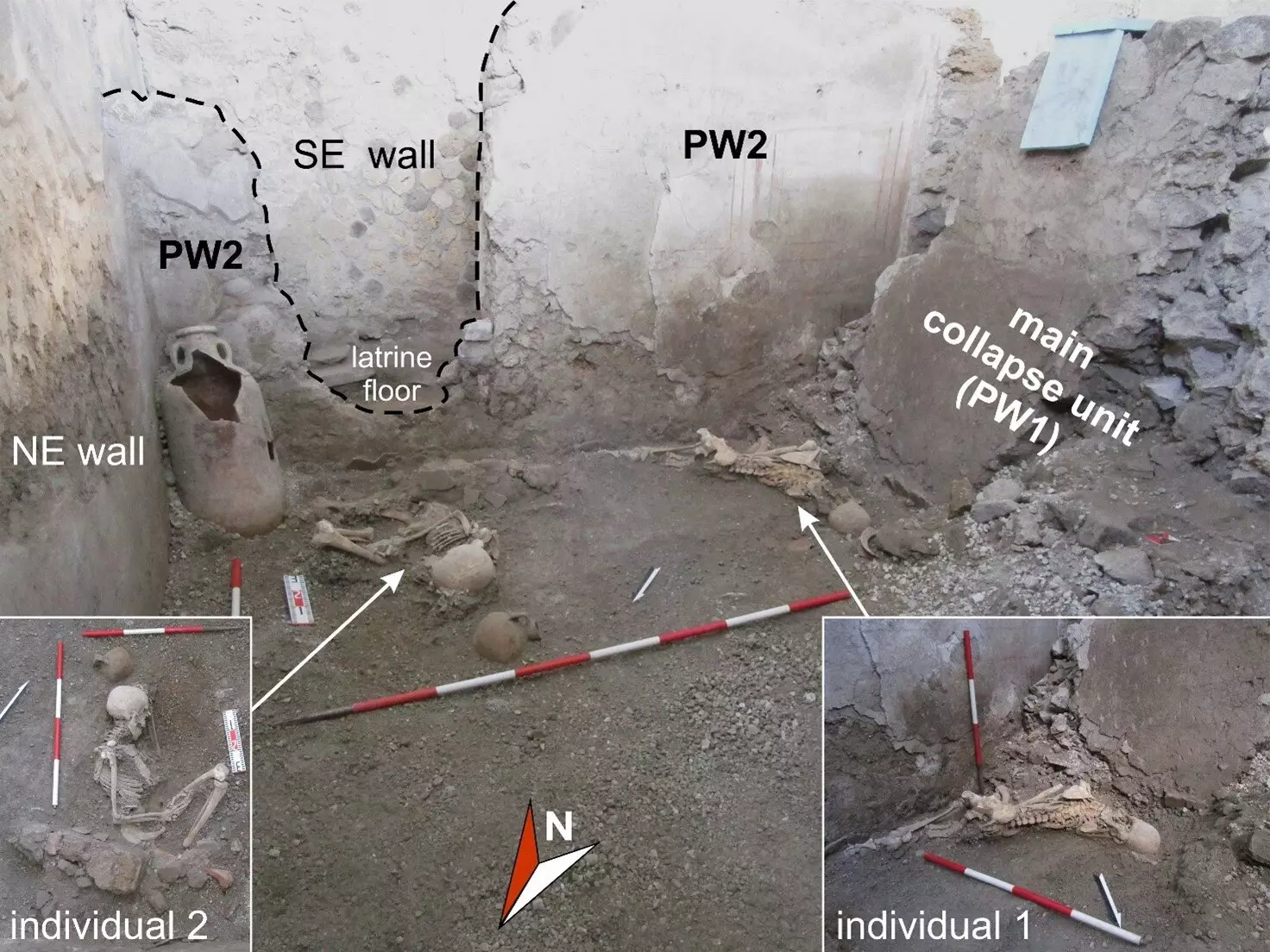The eruption of Mount Vesuvius in 79 CE stands as one of history’s most harrowing disasters. For centuries, scholars sought to piece together the harrowing events that buried the Roman city of Pompeii. Now, a groundbreaking study led by experts from the Istituto Nazionale di Geofisica e Vulcanologia (INGV) and Pompeii Archaeological Park brings fresh insights, revealing how seismic activity contributed to the chaos. This research not only enhances our understanding of volcanic phenomena but also dives into a nuanced analysis of the earthquake-related destruction influencing human decisions during the cataclysmic event.
As modern-day researchers sift through the remnants of history, they face the daunting task of differentiating between volcanic and seismic damage—two forces that manifested almost simultaneously. The overlapping nature of these disasters has made the investigation as intricate as assembling a complex puzzle. The insight of Dr. Domenico Sparice, the study’s lead author, frames the challenge: recognizing how earthquakes compounded the tragedy provides a profound understanding of the final moments for the people of Pompeii.
The Jigsaw Puzzle of Destruction
This investigative endeavor unearthed not just the physical remnants of the eruption but also the psychological impacts on its residents. As excavations proceeded, anomalies in structural integrity pointed to an unsettling reality—the earthquakes, rather than solely volcanic ash and heat, played a pivotal role in the devastation witnessed by the Pompeiians. The research team identified distinctive features in the collapsed buildings that could not merely be explained by volcanic activity, igniting curiosity and leading to a deeper exploration of events as they unfolded.
Among the most revealing findings were the skeletal remains of two men, both about 50 years old, who perished under catastrophic conditions. Fractures and trauma to their remains illuminated a critical narrative that diverged from previous assumptions about how the eruption unfolded. The physical positioning of the skeletons—a stark contrast to the usual narrative of suffocation—suggests that these individuals were likely aware of the volcanic threat and sought refuge, only to fall victim to subsequent tremors and structural collapses.
The Human Experience Amid Catastrophe
The eruption, characterized by the relentless fall of pumice lapilli for approximately 18 hours, was initially perceived as an imminent disaster, compelling many to seek shelter. However, the temporary reprieve that followed the initial eruption proved deceptive. Reports indicate that once the volcanic fury subsided for a brief period, surviving citizens may have mistakenly interpreted the cessation as a signal of safety. This miscalculation ultimately led to dire consequences, as powerful earthquakes reared their heads with catastrophic force.
Dr. Valeria Amoretti, an anthropologist involved in the research, stressed the tragic fate that befell those who remained sheltered. The weight of already compromised structures, bolstered by earthquake-induced collapses, became lethal for many. This shift in understanding places prime significance on how human choices, imbued with desperation and fear, intertwined with geological forces beyond their control.
Pervading Questions of Survival
The depth of human tragedy lies not only in the physical collapse of structures but also in the choices of the people who lived in Pompeii. The investigation raises poignant questions about survival tactics. The profound differences observed between the two skeletons signify differing reactions to impending doom: one succumbing instantly to the chaos while the other attempted to shield himself—albeit unsuccessfully. Such narratives, researched and pieced together through paleontological evidence, craft a more vivid image of human resilience and despair in desperate times.
As the researchers continue their vital work, the challenge remains to accurately quantify the impact of both volcanic and earthquake-related trauma. The historic statistics surrounding casualties have long been marred by ambiguity. Yet, the insights unveiled might not only reshape academic discourse but allow modern society a glimpse into the lives lived—and lost—more than two millennia ago.
Intimate Reflections of a Past Catastrophe
In this meticulous exploration, the researchers do not merely reconstruct events; they bring forth an emotional resonance that bridges the gap between past and present. The dynamics of choice and chance amidst disaster reveal a deeper connection to those who once inhabited Pompeii. Every excavation—each skeletal discovery—invites a reflection on the human condition, our inherent vulnerabilities, and our relentless pursuit of survival against the backdrop of nature’s formidable fury.
Such scholarly pursuits offer more than technical precision; they infuse our understanding with humanity, shining a light on how the intersection of natural disasters and human choices orchestrated a tragic symphony of life and death during one of history’s most infamous events.


Leave a Reply